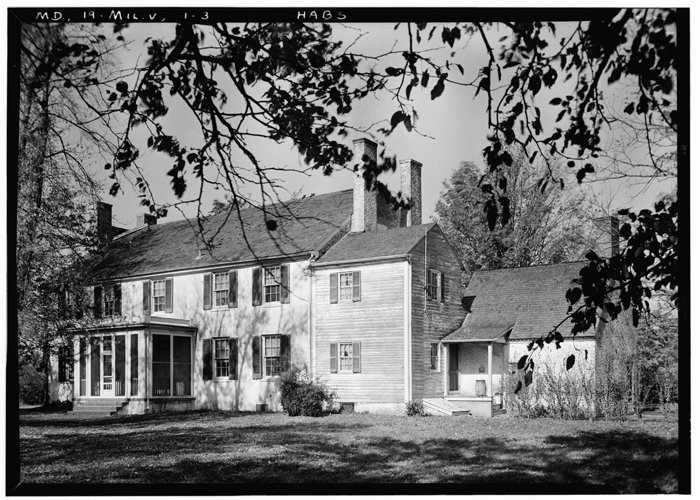Commander, Naval Air Systems Command (NAVAIR) Vice Admiral Carl Chebi and a gathering of distinguished visitors, industry leaders and guests celebrated Sept. 16 the 300th anniversary of the establishment of Mattapany Manor, the residence of Chebi and NAVAIR commanders before him.
“Thank you again for coming today to visit historic Mattapany-Sewall, a place I’m proud to call home,” Chebi said. “If you can get this as a rental property, I highly recommend it.”
Chebi talked about how the past and present meet at Mattapany and NAVAIR.
“Take a look at the Navy Junior ROTC cadets and the sea cadets here today, they are the next generation. The mission we have at NAVAIR is to make sure our sons and daughters have what they need to execute the mission successfully and return home safely. They are employing the warfighting capability that you provide every day.”
The oldest flag quarters in the Navy, the history of the Mattapany residence begins well before construction of the present day home. Part of a 1,200-acre estate, Charles Calvert, Third Lord of Baltimore, and his wife, the widow Jane Sewall, built the original manor and accompanying out buildings sometime between 1666 and 1671. Situated a few hundred yards from the current structure, it soon became the political center for Southern Maryland, complete with an armory, jail and courthouse.
Notwithstanding the structure’s various idiosyncrasies, “it’s an amazing house,” former NAVAIR commander and retired Vice Admiral Dean Peters said. “First, it’s a symbol of NAVAIR. [It has] such a tie to the past, the history of this area in Southern Maryland. People who built a state, and built a nation. It’s such an honor, and we really enjoyed our time here.”
“We loved the history of the house, thinking about all the people who lived here before us,” Patty Peters, Peters’ wife, said. “Thinking about the quiet, the stillness of the house and the grounds. We also liked hosting events around the holidays, having Sailors and people who worked here over to come celebrate with us in this house that belongs to the Navy. We loved sharing the house. We are just stewards.”
Then there is the STEM-minded ghost.
“I love the atmosphere of the entire house. I love having my friends over,” Ashlie Chebi, Chebi’s daughter, said. “We’ll tell ghost stories on the third story because everybody says that’s the most haunted one,” she added with a laugh. “I’ll be doing homework in my room, and the lights will dim for like 15 minutes. [The ghost] is vibing with me. She’s helping my brain process. She’s good at physics.”
“It’s a fun space.”
Following political and religious upheaval in the area in the mid-to-late 1680s, Calvert lost control of the estate and it was abandoned until the Sewall family reclaimed it in 1722. With the original home in disrepair, the Sewall family began construction of modern-day Mattapany sometime in the early 1740s—likely using bricks from the original structure.
“It’s possible this house was built in 1740,” said Craig Lukezik, Cultural Resource Manager for NAVAIR. “And, maybe, the current garage—which was originally the kitchen—was the first house the family lived in in 1722 before the current one was constructed.”
Mattapany and the surrounding property was sold in 1840 to the Thomas family, who improved and expanded it largely into the form apparent today, and again in 1932 to George Weschler, a Washington, D.C., engineer. Weschler—who worked for the better part of a decade to restore Mattapany to its former glory—sold the property to the Navy in 1942 on the condition that the restoration be completed.
The Navy completed the restoration in short order, and Naval Air Station Patuxent River’s first commander, Rear Admiral William T. Rassieur and his family moved in the following year.
Chebi is the 36th commander to reside in the home.
Story Courtesy of David Byrd, Editor in Chief, Naval Aviation News

